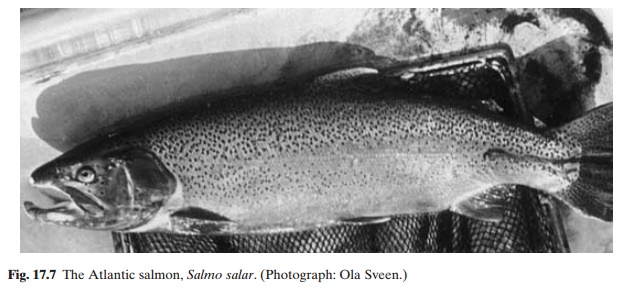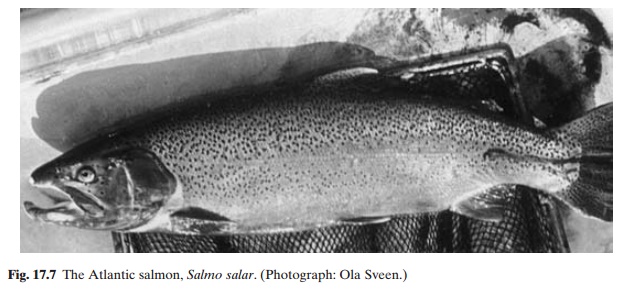Chapter: Aquaculture Principles and Practices: Trouts and Salmons
Salmons

Salmons
As will be discussed in further detail, typically anadromous salmons
have been the focus of ranching programmes, and the Pacific salmon (Oncorhynchus) is the most important in
this respect. The largest species is the chinook or king salmon (O. tshawytscha) which occasionally
reaches a weight of 45kg. Maturity and spawning usually occur after four years,
but can occur earlier or later (between two and seven years). The fresh-water
nursery period also varies from three months to two years, but the usual period
is six months. Coho salmon (O. kisutch)
is a hardy species and has been widely transplanted. It reaches a weight of
15kg, maturing at an age of two to four years and migrating upstream in late
autumn or winter, after other salmons have completed spawning. The fresh-water
nursery period is between one and two years. The sockeye salmon (O. nerka) spawns in streams connected to
lakes. Spawning takes place below the lake and the young ones spend two to
three years in the lake before migrating to the sea, where they live for a year
or two. Though they occasionally reach 100cm in length, the average size is
much smaller. The chum or dog salmon (O.
keta) reaches a length of 1m and a weight of 20kg, whereas the pink salmon
or humpback salmon (O. gorbuscha)
reaches only about 4–5kg. Both species spawn in streams or rivers and migrate
to the sea within a year of hatching, the pink salmon returning as two-year
olds, and the chum salmon as two- to six-year olds.

Though restocking and ranching of the Atlantic salmon (Salmo salar) have been undertaken in the
past and continue to be done, this is the main species presently used for
large-scale sea farming (fig. 17.7). Some of the Pacific salmons, mainly coho
and chinook salmons, have also been cultured in floating cages. As the general
culture technologies are similar, the methods relating to the Atlantic salmon
will be described here in some detail. However, there is one major difference
between the Pacific and Atlantic salmons: the Pacific salmon normally dies
after spawning, whereas some of the spent fish (or kelts) of the Atlantic
salmon survive and return to the sea, ascending streams two years later to
spawn again. This makes it possible to use brood fish of this species for
repeated spawning, if necessary. The size attained in nature by the Atlantic
salmon varies greatly, depending on the length of its ocean residence, but
weights of up to 36kg have been recorded. The usual weight is 2–10kg, averaging
about 4.5kg.
Related Topics